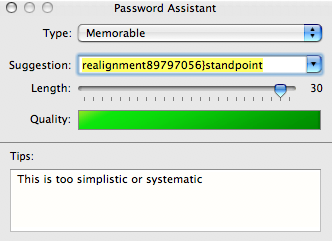English version below
Front Row Trailers est le nouveau nom de Bandes-annonces Front Row depuis la version 2.1.
Front Row Trailers n'est plus disponible. Veuillez vous référer aux instructions pour restaurer les bandes-annonces originale d'Apple.
Foire Aux Questions
Q: Comment faire pour désinstaller Front Row Trailers ?
R: Il n'y a pas besoin de désinstaller Front Row Trailers, il suffit de sélectionner la source
Apple (US) et les bandes-annonces d'origine seront de retour.
Q: Est-ce que Front Row Trailers est compatible avec Leopard (Mac OS X 10.5) ?
R: Oui
Q: Sur Leopard, je dois entrer mon mot de passe à chaque fois que je change de source, que puis-je faire pour éviter cela ?
R: Il suffit de taper la commande suivante dans le Terminal (une fois la commande entrée, il faut taper son mon de passe):
sudo chmod o+w /System/Library/PrivateFrameworks/BackRow.framework/Versions/A/Resources/Trailers.plist
Q: Est-il possible de désactiver les bandes-annonces ?
R: Depuis la version 2.1.1, Front Row Trailers le permet en choisissant la source spéciale
Deny.
Sur Leopard, il est aussi possible de désactiver les menus
iTunes Top Movies,
iTunes Top Songs et
iTunes Top Music Videos en entrant la commande suivante dans le Terminal:
defaults write com.apple.frontrow EnableITMS -bool NO
Attention: cette commande doit être entrée
avant de choisir la source Deny dans Front Row Trailers.
Q: Sur Leopard, certaines bandes-annonces ne se lisent pas aussi bien que sur Tiger ou ne fonctionnent même pas du tout. Prévoyez-vous de distribuer une mise à jour ?
R: Front Row pour Leopard utilise une architecture très différente de celle de Front Row pour Tiger. Tandis que Front Row pour Tiger utilise QuickTime pour lire les bandes-annonces, Front Row pour Leopard semble utiliser son propre méchanisme passant outre QuickTime. Alors que les bandes-annonces se lisent bien dans QuickTime player, celles-ci peuvent ne pas fonctionner dans Front Row. C'est notamment le cas avec les bandes-annonces allemandes utilisant le codec Sorenson 3. Malheureusement, il n'y a rien que je puisse faire. Néanmoins, une future mise à jour de Front Row ou de QuickTime pourrait résoudre ces problèmes.
Historique des versions
Version 2.1.2 (2008-01-24)
* Ajouté Ciné.ch (source suisse romande)
* Détection correcte de la version de QuickTime
Version 2.1.1 (2007-12-18)
* Ajouté Lycos (source espagnole)
* Enlevé Cinefacts (l'accès à Front Row Trailers a été bloqué)
* Possibilité d'interdire les bandes-annonces
Version 2.1 (2007-10-15)
* Changement de nom
* Bandes-annonces haute définition
* 20 sources
* Traduction italienne
* Traduction danoise
* Options de tri
* Nouveau système de mise à jour
Version 2.0.2 (2007-08-20)
* Corrige un bogue dans la détection de Perian
Version 2.0.1 (2007-06-22)
* Corrige un bogue dans la détection des composants QuickTime
Version 2.0 (2007-06-21)
* Nouvelle interface
* 9 nouvelles sources de bandes-annonces à choix
Version 1.1 (2007-05-03)
* Suppresion des saccades
Version 1.0 (2007-02-19)
* Version initiale
Bandes-annonces Front Row is know as
Front Row Trailers since version 2.1.
Front Row Trailers isn't available anymore. Please refer to
instructions to restore factory Apple trailers.
Frequently Asked Questions
Q: How do I uninstall Front Row Trailers ?
A: There is no need to uninstall Front Row Trailers, just select the
Apple (US) source and you will get the original trailers from Apple.
Q: Is Front Row Trailers compatible with Leopard (Mac OS X 10.5) ?
A: Yes
Q: In Leopard, I am prompted for my password every time I change the source, is there anything I can do about that ?
A: Just type the following command in the Terminal (you will have to type your password):
sudo chmod o+w /System/Library/PrivateFrameworks/BackRow.framework/Versions/A/Resources/Trailers.plist
Q: Is it possible to disable the theatrical trailers ?
A: Since version 2.1.1, Front Row Trailers is able to deny trailers access by choosing the special
Deny source.
On Leopard, it is also possible to disable the
iTunes Top Movies,
iTunes Top Songs and
iTunes Top Music Videos menus by typing the following command in the Terminal:
defaults write com.apple.frontrow EnableITMS -bool NO
Warning: this command must be typed
before choosing the Deny source.
Q: In Leopard, some trailers won't play as smoothly as in Tiger or won't even play at all. Are you planing to release an update ?
A: Front Row for Leopard uses a very different architecture than Front Row for Tiger. Whereas Front Row for Tiger uses QuickTime for playing the trailers, Front Row for Leopard seems to uses its own mechanism ignoring QuickTime. While the trailers play fine in QuickTime Player, they may not play in Front Row. This is notably the case with german trailers using the Sorenson Video 3 codec. Unfortunately, I can not do anything about that. Nevertheless, a future update of Front Row or QuickTime may fix these issues.
Version history
Version 2.1.2 (2008-01-24)
* Added Ciné.ch (swiss french source)
* Correctly detects QuickTime version
Version 2.1.1 (2007-12-18)
* Added Lycos (spanish source)
* Removed Cinefacts (Front Row Trailers access has been blocked)
* Possibility to deny trailers access
Version 2.1 (2007-10-15)
* Name change
* High-definition trailers
* 20 sources
* Italian localization
* Danish localization
* Sorting options
* New update system
Version 2.0.2 (2007-08-20)
* Fixes a bug in Perian detection
Version 2.0.1 (2007-06-22)
* Fixes a bug in QuickTime components detection
Version 2.0 (2007-06-21)
* New interface
* 9 new trailers sources
Version 1.1 (2007-05-03)
* Trailers play more smoothly
Version 1.0 (2007-02-19)
* First version

















